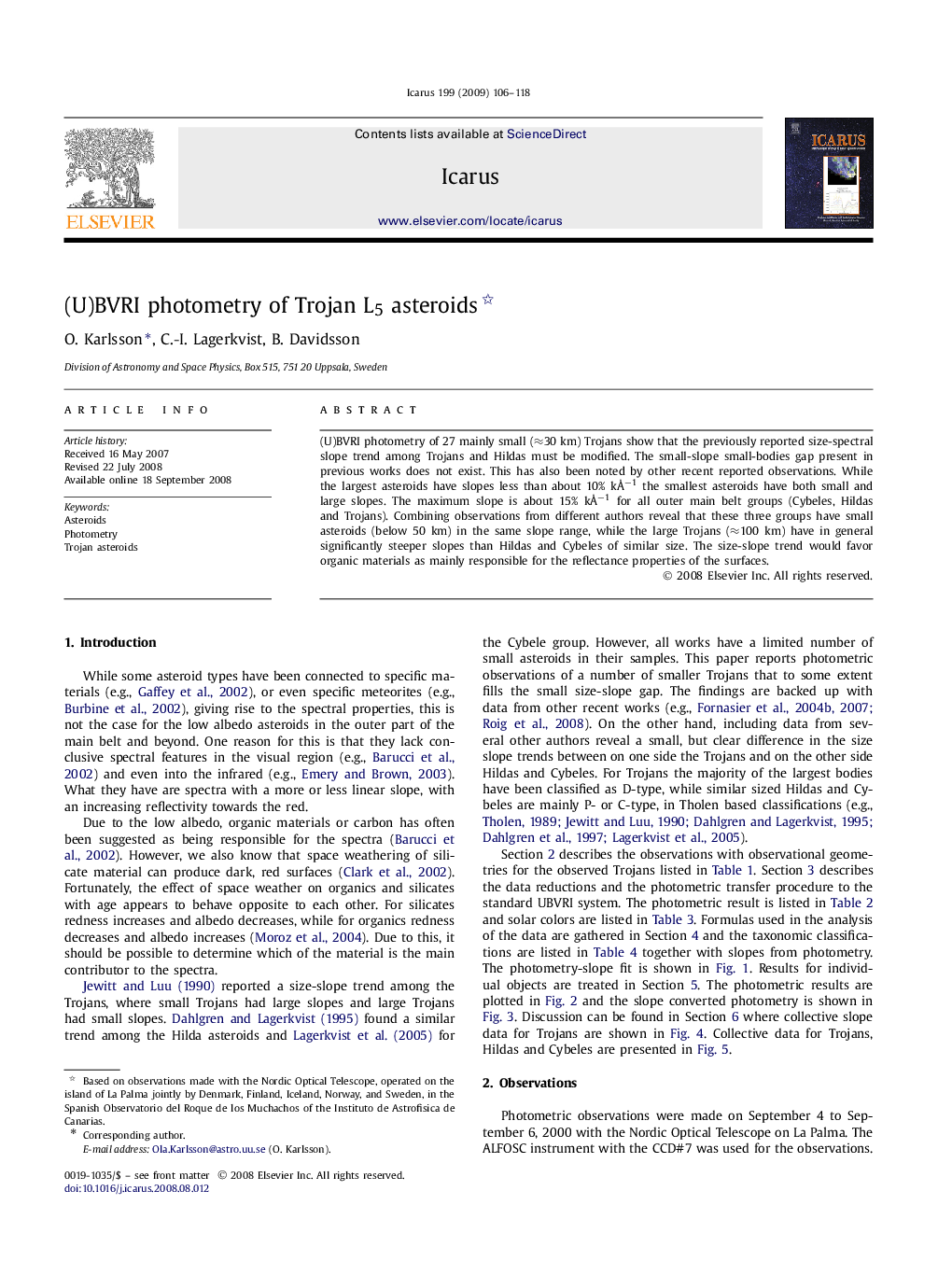| Article ID | Journal | Published Year | Pages | File Type |
|---|---|---|---|---|
| 1774842 | Icarus | 2009 | 13 Pages |
(U)BVRI photometry of 27 mainly small (≈30 km≈30 km) Trojans show that the previously reported size-spectral slope trend among Trojans and Hildas must be modified. The small-slope small-bodies gap present in previous works does not exist. This has also been noted by other recent reported observations. While the largest asteroids have slopes less than about 10% kÅ−1 the smallest asteroids have both small and large slopes. The maximum slope is about 15% kÅ−1 for all outer main belt groups (Cybeles, Hildas and Trojans). Combining observations from different authors reveal that these three groups have small asteroids (below 50 km) in the same slope range, while the large Trojans (≈100 km≈100 km) have in general significantly steeper slopes than Hildas and Cybeles of similar size. The size-slope trend would favor organic materials as mainly responsible for the reflectance properties of the surfaces.
